Best 3D Printers 2024

The best 3D printers can cost less than $250 (sometimes even less than $200), or you could spend a bit more for special features such as a larger build volume, higher resolution, or faster output. With the right 3D printer, you can make tabletop models, replacement parts, custom accessories, 3D print parts for PC mods and toys, Raspberry Pi cases, or even edible QR codes. For beginners, there's never been a better time to join the world of 3D printing or for experienced makers to upgrade to a new model.
The two types of desktop/home 3D printers are resin MSLA (Masked Stereolithography) and filament FDM (Fused Deposition Modeling). FDM printers are the best 3D printers for beginners or kids. These use reels full of plastic filament fed into a hot nozzle and extruded layer-by-layer to form a solid model. MSLA printers use a UV-cured resin material to form a model layer-by-layer as it rises from a vat of toxic liquid that requires very careful handling and post-processing.
If you are interested in making (really) big prints, Elegoo's massive Orange Storm Giga is finally available for pre-order. It has a build volume of 800 x 800x 1000 mm, so it can definitely handle all types of large-scale prints. Check out our review for performance details, see the cool prints we made with this behemoth of a printer, and find out why it fell short of making our best list recommendation.
Amazon Prime Day October 2024
Amazon's October Prime Day has kicked off and we have been scouring for the best deals on the 3D printer tech that we know you will love. We'll be regularly updating this page with the best 3D printer deal.
Below are our picks for the Best 3D printers on the market today. We’ve reviewed over a hundred 3D printers from the most popular brands, like Bambu Lab, Prusa Research, Creality, Anycubic, Elegoo, and more. Whether you’re looking for an entry-level machine for the home or a multi-material business workhorse, we can help you find the perfect match. If you want to crank out prototypes as fast as possible, we have a 3D Printer Speed Hierarchy that ranks printers according to speed alone. For low-cost options, see our list of Best Budget 3D Printers.
Quick List
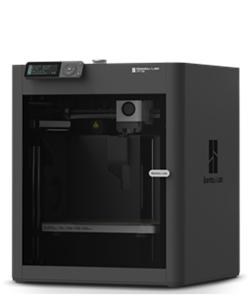 Best Overall
Best Overall
Best 3D Printer Overall
The P1S is an impressive 3D printer that delivers multi-color, high-quality output with blazing 500mm/s print speeds and a maximum acceleration rate of 20,000 mm/s. It has all the premium features experienced makers are looking for and is currently on sale for $599 for the standalone product. It is $849 for the AMS lite combo.
For an open-frame alternative, you can get the P1P for $499.
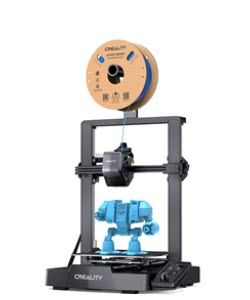 Best Budget
Best Budget
2. Creality Ender 3 V3 SE
Best Budget 3D Printer
A beginner's dream machine, the Ender 3 V3 SE is one of the most affordable bed slingers that retails at $219. Despite its low price, Creality did not scrimp on deluxe features. It has auto bed leveling, auto filament loading, and a modern LED interface.
Alternatively, the Neptune 4 Pro is a faster machine and is currently on sale for the same $219 price, but it lacks auto-bed leveling.
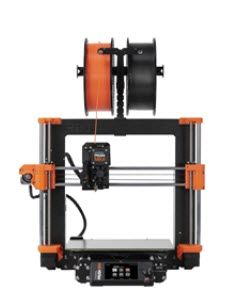 Best Precision
Best Precision
Best Premium 3D Printer
The new upgrade to the MK4 is here, and Prusa has managed to offer it for the same price of $1,099 (pre-assembled) and a DIY kit for $799. It's fast and has the top-quality performance Prusa is known for, and it now comes with a mobile app for remote access. The MK4S is a reliable workhorse, making it the best 3D printer if you want to start a small business or a print farm.
If you already own an MK4, a $99 upgrade kit is available.
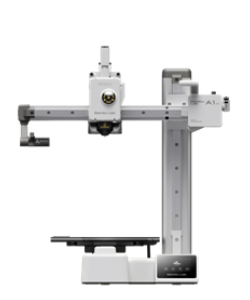 Best for Beginners
Best for Beginners
Best 3D Printer for Beginners
This bed slinger may come with a small 180x180x180mm build volume but it has an impressive top speed of 500mm/s. It's so easy to use. At $199, it is perfect for beginners or anyone who wants to try printing multi-color models without breaking the bank.
 Fastest Affordable
Fastest Affordable
Fastest Budget 3D Printer
With a top print speed of 600 mm/s and a maximum acceleration rate of 20,000 mm/s², the Creality Ender 3 V3 beats the KE as our previous high-speed contender for the fastest affordable 3D printer. It's currently on sale for less than $300.
 Best Multicolor
Best Multicolor
Best Multicolor 3D Printer
Five toolheads are better than one — especially if you are looking to do multicolor prints easily. Prusa's XL allows you to use multiple materials like PLA, TPU and PETG in one print and with no waste. It comes with a premium price of $1,999 semi-assembled. Add on $500 for the fully assembled model.
Show More ⬇️
 Best Professional
Best Professional
Best Professional 3D Printer
This easy-to-use, fully enclosed, high-speed multicolor 3D printer adds smart features like LIDAR-assisted calibration and live video monitoring among its many premium capabilities. Also comes with a premium price of $1,449 for the combo.
 Best for Cosplay
Best for Cosplay
Best Large Format 3D Printer
Elegoo's Neptune 3 Max is a large-format 3D printer best for prop makers and cosplayers. It's easy to use, and our test models came out almost perfect each time. Just make sure you have enough room because this big boy takes up a lot of space.
 Best Resin For Beginners
Best Resin For Beginners
9. Anycubic Photon Mono 2
Best Resin 3D Printer for Beginners
The Photon Mono 2 was made specifically for first-time resin users. It delivers quality 4K prints with a smaller vat and a petite footprint that requires minimal space. It comes with an extra-large screen protector for the LED glass, which covers the glass and the slight gap around it. This makes keeping the printer clean super easy.
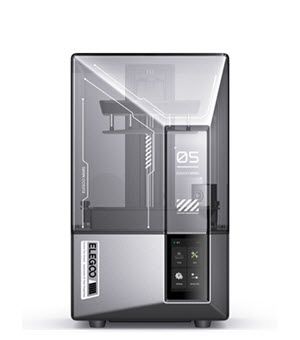 Best For Miniatures
Best For Miniatures
Best Ultra High Resolution 3D Printer
Elegoo's Mars 5 Ultra checks all the boxes for fast, high-quality, super detailed resin printing. It's perfect for tiny figures with tiny details. It also comes with lots of automatic features like auto-leveling and tilt release that makes it easy to use. On sale right now for $269 - that's a $70 savings from original MSRP.
 Best Medium Format
Best Medium Format
11. Elegoo Neptune 4 Plus
Best Medium Format 3D Printer
This FDM 3D printer features more build volume than the Neptune 4 Max but with the same high-speed capabilities. It offers all the bells and whistles you could ask for at a reasonable $350 price point. It is perfect if you want to move up to printing bigger projects or as a second machine.
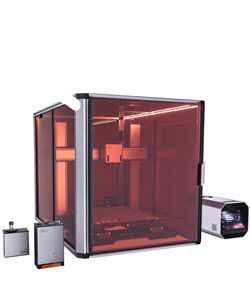 3D Printer / Laser Engraver Combo
3D Printer / Laser Engraver Combo
12. SnapMaker Artisan 3-in-1
Best Combo 3D Printer / Laser Engraver
This deluxe all-in-one 3D printer, laser, and CNC machine from SnapMaker has everything a serious craftsman needs for large-scale printing and laser cutting projects. It's not cheap, but it's currently on sale for $1,149 at Amazon.
 Best for Kids
Best for Kids
Best 3D Printer for Kids
Specifically designed for kids, the X-Maker is shipped fully assembled and ready to use out-of-the-box. Priced at $359, it has passcode safety features and is preloaded with kid-friendly design programs.

Denise has been using 3D printing as a creative outlet since 2020 when she got her first Creality CR10s. She’s been a freelance newspaper reporter, online columnist and craft blogger with an eye for kid’s STEM activities. She’s added YouTube to her social media skills and has traveled cross county and overseas to talk 3D printing with fellow makers. She's analyzed nearly 100 different 3D printers, from a tote bag sized delta to a meter wide Elegoo OrangeStorm Giga currently camped out in her living room. When she’s not building 3D printed RC cars or stirring glitter into a batch of resin, you’ll find her at the latest superhero movie with her husband and two sons.
Best 3D Printers You Can Buy Today
Why you can trust Tom's Hardware Our expert reviewers spend hours testing and comparing products and services so you can choose the best for you. Find out more about how we test.
Best 3D Printer Overall
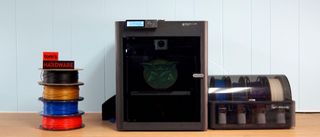
Best 3D Printer Overall
Specifications
Technology: FDM
Build Volume: 256 x 256 x 256mm
Build Platform: PEI Spring Steel Sheet, heated
Interface: LCD with D-pad selector
Bed Leveling: Automatic
Connectivity: microSD card, WiFi, Bluetooth
Reasons to buy
+ Blazing speed Enclosure for high temperature printing Simple auto bed leveling All metal hotend Optional 4 color AMS
Reasons to avoid
- Pricey Mediocre UI
Today’s 3D printers are all about speed, and Bambu Lab’s P1S delivers a whopping maximum print speed of 500mm/s, backed with an acceleration rate of 20,000 mm/s. How fast is that? Let’s just say its turbo button is labeled “Ludicrous Mode”. It can knock out a Speed Benchy in 17 minutes with good quality, and its normal print speed is around five times faster than old school bed slingers. It’s not the most budget minded printer, but it has the best out-of-the-box experience for both beginners and experienced makers.
The P1S is the “Goldilocks” of Bambu Lab’s lineup, offering everything you need for very good, very fast prints without going overboard on expensive features. It’s a Core XY machine, which offers both speed and smooth printing. It has an all metal hotend with a direct drive extruder, plus it's fully enclosed for handling temperature sensitive material like ABS and ASA. It’s one of the few “plug and play” 3D printers on the market, arriving 99.5% assembled. All you need to do is unbox and unpack the printer. It even calibrates itself.
The machine retails for $699, which may not fit everyone’s budget. But if you’re looking for a machine that just works so you can focus on the creative or business side of 3D printing, the P1S is for you. If you want the ability to print in a rainbow of colors, then the optional Automatic Multicolor System is a definite plus that you can only get with a Bambu Lab printer.
When we tested the P1S it did an amazing job, quickly printing colorful action figures, nylon gears for an RC car and ASA tools for around the house. It did have to slow down to print TPU, but the results were remarkably smooth and flawless.
More: Bambu Lab P1S Review
Best Budget 3D Printer

Best Budget FDM 3D Printer
Specifications
Technology: FDM
Build Volume: 220 x 220 x 250 mm
Build Platform: PEI Spring Steel Sheet, heated
Interface: 3.2” Color Screen with Knob
Bed Leveling: Automatic
Connectivity: SD Card
Reasons to buy
+ Affordable Easy assembly Excellent Auto bed leveling Direct drive Easy Interface
Reasons to avoid
- PC coated plate
There has never been a more user friendly, sub $200 3D printer than Creality’s Ender 3 V3 SE. Say goodbye to scratch builds and manual leveling. This machine takes no more than 15 minutes to assemble, then self levels and sets its own Z height. Its modern LED interface makes the machine simple to use and comes complete with guides to walk you through filament changes and more.
It’s faster than previous Ender 3s with a max speed of 250mm/s, which is mainly done by way of a robust build, with linear rods on the Y axis and dual Z axis, rather than speedy firmware.
Obviously Creality had to cut a few corners to produce this machine. It only has one Z stepper motor – the second Z axis is synced with a belt. The bed has a cheaper PC surface, and there’s no Wi-Fi.
More: Creality Ender 3 V3 SE Review
Best Premium 3D Printer
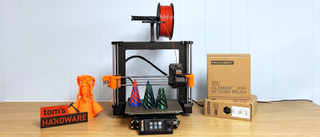
Best Premium 3D Printer
Specifications
Technology: FDM
Build Volume: 250mm x 210mm x 220mm
Build Platform: PEI spring steel flex plate
Interface: Color LCD screen with knob
Bed Leveling: Automatic
Connectivity: USB drive, LAN, Wi-Fi
Reasons to buy
+ High flow CHT Nozzle Perfect first layer PEI Steel flex plate Very quiet Fully assembled or DIY kit
Reasons to avoid
- Expensive
Prusa has updated its flagship i3 printer with a new cooling system and high flow nozzle to produce prints that are fast and accurate without the need to run at ridiculous acceleration rates. The company has enclosed a portion of its 600 machine print farm in order to create MK4S parts in PC Carbon Fiber – a stronger material that is also heat-resistant.
The MK4S is the whole enchilada, with fully automatic bed leveling, dual Z axis, magnetic flex plate, and a color touch screen. It also introduces a NFC antenna, that when paired with the new Prusa mobile app, will get your machine online in a flash. An optional GPIO board will let you hack your printer with gcode to add lights, camera triggers and other nerdy tricks. While the MK4S still comes factory calibrated for input shaping, Prusa has made an optional accelerometer available for those who feel the need to tweak their printer.
The new MK4S will remain at the same price of $1,099 for a pre-assembled machine and $799 for a DIY kit. This is certainly expensive for a bed slinger, but for makers who want top-quality performance and stellar customer service, the MK4S is worth the investment. Old MK4 units can be upgraded with new parts with a $99 kit.
More: Prusa MK4S 3D Printer Review
Best 3D Printer for Beginners
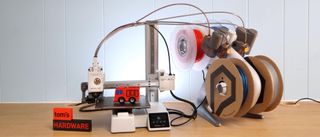
Best 3D Printer for Beginners
Specifications
Technology: FDM
Build Volume: 180 x 180 x 180 mm
Build Platform: PEI textured spring steel sheet, heated
Interface: Touch screen
Bed Leveling: Automatic
Connectivity: WiFi, Bambu-Bus, Micro SD
Reasons to buy
+ Speed Quick change nozzle Direct Drive Auto bed leveling Inexpensive AMS (optional)
Reasons to avoid
- AMS takes up a lot of space
If you want to squeeze as much printing power into a small space (and tight budget) as possible then Bambu Lab’s A1 Mini checks all the boxes. It’s a bed slinger style mini 3D printer with the option of adding a “lite” AMS (Automatic Material System). It’s the fastest bed slinger we’ve clocked so far, and nearly as fast as Bambu’s larger Core XY machines.
Retailing at $299 for the printer and $459 with the AMS Lite, it packs more features than the competition for significantly less money. It has an intuitive color touch screen, quick change steel nozzles and a blazing 10,000mm/s² acceleration speed for fast, clean prints. The A1 Mini can level the bed and set its own Z height with the touch of a button.
The AMS for the A1 Mini spoils the compact footprint a bit, as it has to be set next to the printer rather than on top. It makes up for the inconvenience by being superior to the full sized AMS with sensors that detect tangles and a spindle for each spool that can accommodate filament with odd sized or cardboard spools.
More: Bambu Lab A1 Mini Review
Fastest Budget 3D Printer
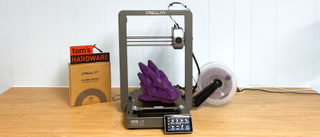
Fastest Budget 3D Printer
Specifications
Technology: FDM
Build Volume: 220 x 220 x 250 mm
Build Platform: PEI spring steel flex plate
Interface: 4.3-inch Touch Screen
Bed Leveling: Automatic + Z
Connectivity: USB, Wi-Fi
Reasons to buy
+ Excellent Auto bed leveling Fast Klipper firmware Open Source
Reasons to avoid
- Creality’s interface is limited
There’s no longer a need to sacrifice quality and style for speed on a budget. Creality’s Ender 3 V3 clocks in at 600 mm/s and is currently on sale for $299. A Core XZ motion system provides extra precision and smooth layers lines because both the X and Z axis are driven by a loop of belts with a pair of stepper motors attached to the base. The spool holder is also slung off the base, keeping the center of gravity low and machine stable, resulting in better performance.
The Ender 3 V3 has sensors for auto bed leveling, auto Z height detection and input shaping to cancel out vibrations that can leave artifacts on prints. The hotend can reach 300° C with a “unicorn” tri-metal high flow nozzle with a hardened steel tip that can tackle abrasive filaments with ease.
It comes with Creality’s fork of Klipper for precision at speed, and it has root access if you want to switch to a custom version of Klipper for more control.
The V3 boasts a top speed of 600mm/s and an acceleration speed of 20,000mm/s², but only pulls those numbers out for speed tests. The slicer defaults limits its speed to a more reasonable 200-300 mm/s which is still makes it our fastest bed slinger with a speed boat test of 14 minutes and 54 seconds.
More: Creality Ender 3 V3 Review
Best Multicolor 3D Printer
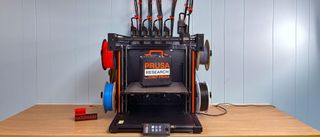
Best Multicolor 3D Printer
Specifications
Technology: FDM
Build Volume: 360mm x 360mm x 360mm
Build Platform: PEI spring steel flex plate
Interface: 3.5 inch Color LCD screen with knob
Bed Leveling: Automatic
Connectivity: USB drive, LAN, Wi-Fi
Reasons to buy
+ Waste Free color swapping Can mix various materials with different temperature needs Fast color swaps Large size Core XY Direct drive Auto bed leveling
Reasons to avoid
- Expensive
We’re finally seeing 3D printers catch up with Bambu Lab’s Automatic Material System, first launched in 2021, and capable of producing four color prints with a single unit. Prusa Research’s XL has surpassed the X1 Carbon with a five-spool tool changer system that is faster and far less wasteful. Because each spool has a dedicated filament path and its own hotend, the XL can rapidly change colors without having to load and unload materials. Instead, each color is on standby at 175° and only needs a quick heat up and prime before going to work.
This system is not only faster, but it doesn’t waste material. The Bambu Lab AMS system is infamous for piles of “filament poop” that plague users. Because the AMS system shares one nozzle, it has to be cleaned of melted filament with each color change. Only cold filament can go back on the roll.
This is not Prusa’s first attempt at color, having developed a multicolor attachment for their MK series as far back as 2017. Sadly, the MMU is quirky and never quite caught on. It did, however, allow Prusa to adapt PrusaSlicer to multicolor slicing and give them ample time to perfect the software before the XL launched.
The Original Prusa XL is a true “multi-material” 3D printer that can handle up to five different materials. Because each spool of filament gets its own hotend, users can mix and match filament types as well as colors, and adjust temperature and flow accordingly.
The only downside to the Prusa XL is the price, which is a hefty $3,999 when fully equipped with five tool heads and shipped assembled. Users can start with a less expensive two-head machine, and purchase more toolheads later as upgrades.
If you want a more affordable multicolor system and don't mind a smaller build volume, there are a couple of 3D printers to consider. We recently reviewed the Kobra 3, Anycubic's first four-color bedslinger, which comes with input shaping and impressive speed. The slicer still needs work, though. It launched with an MSRP of $549 and is currently on sale for $489. Alternatively, the Bambu Lab P1S is a solid option with speed, quality, and an AMS system that can print up to 16 colors. The combo costs $849 and stand-alone machine is $599.
Read: Original Prusa XL Review
Best Professional 3D Printer
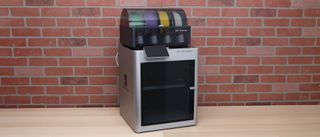
Best Professional 3D Printer
Specifications
Technology: FDM
Build Volume: 256 x 256 x 256 mm
Build Platform: Flexible Removable Magnetic Sheet
Interface: 5-inch Color Touchscreen
Bed Leveling: LIDAR-assisted Automatic Leveling
Connectivity: microSD, Wi-Fi
Reasons to buy
+ AMS features intuitive guided operations for loading and unloading material Rigid steel frame, aluminum shell, and CoreXY motion system LIDAR-assisted automatic calibration and inspection High speed multicolor printing with AMS Enclosed build volume
Reasons to avoid
- Cool Plate and glue stick included instead of PEI Textured Plate Default purging process involves wasting material
One look at the polished aluminum shell of the Bambu Lab X1-Carbon with AMS and it is immediately clear that this printer stands out from the competition. With a 256mm x 256mm x 256mm build volume, 300°C hot end, and four color AMS, the X1-Carbon brings a new level of polish to the consumer market. The first layer inspection alone is a feature that would justify the cost of this printer to professional users, and the rest is icing on the cake.
Bambu Lab has clearly listened to the feedback of the 3D printer market, and the LIDAR-enabled flow calibration, automatic bed leveling, and first layer inspection of the X1-Carbon are features individually worthy of a “Best Of” entry. Taking all of that and adding in a four color AMS system that can automatically change materials during printing, a fully enclosed build volume, and an intuitive slicer app results in a refreshingly powerful and intuitive machine.
The Bambu Lab X1-Carbon with AMS is a powerhouse of a machine, and the $1,449 price tag is at the high end for printers in the consumer market. While it’s not an inexpensive machine, the X1-Carbon impressed us at every turn during our review, and is likely to remain a popular selection for high speed multi-material desktop FFF 3D printing.
More: Bambu Lab X1-Carbon 3D Printer Review
Best 3D Printer for Props and Cosplay

Best Large Format 3D Printer
Specifications
Technology: FDM
Build Volume: 420 x 420 x 500 mm
Build Platform: PEI textured spring steel sheet, heated
Interface: Color touch screen, removable
Bed Leveling: Automatic, Inductive
Connectivity: microSD card, USB Type A
Reasons to buy
+ Direct drive printing supports TPM Quiet operation Easy to assemble
Reasons to avoid
- Huge footprint
If you want a printer that can output models as big as your imagination, the Elegoo Neptune 3 Max is a great choice. Thanks to a massive build volume of 420 x 420 x 500mm, it can output the large pieces you need to build cosplay helmets and props. We were able to print a very detailed, 450mm Skyrim dagger by rotating it on the build plate and, in Inland Silver PLA+ filament, it looked good enough to bring to battle. We also outputted a 500mm tall purple dragon that would dominate anyone’s display case or mantle.
Like its little sibling, the Neptune 3 Pro, the Neptune 3 Max features a Direct Drive system that allows it to handle complex filaments such as TPU. In fact, using vase mode, we were able to output a flexible, translucent green TPU trash can. The textured PEI build platform did a great job of holding prints in place without the need for glue and yet made removing them easy.
Assembling the Neptune 3 Max is a breeze as we only had to screw in a few bolts to put the machine together and attach the touch screen base to the side. Leveling the bed is pretty easy, though you will have to start by manually leveling the surface, after which there’s a 63-point auto leveling feature.
The most difficult part of working with the Neptune 3 Max is that it takes up a lot of space. We had to sit it on our air hockey table and you may need to get a large table to house it. But that’s an inconvenience that’s inevitable when you want huge prints at excellent quality.
More: Elegoo Neptune 3 Max Review
Best Resin 3D Printer for Beginners
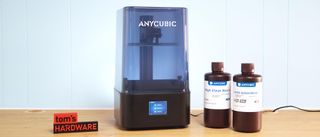
Best Resin 3D Printer for Beginners
Specifications
Technology: Resin
Build Volume: 165 x 89 x 143 mm
LCD Resolution: 4096 x 2560
LCD Size: 6.6-inch Monochrome
XY Axis Resolution: 34 microns
Connectivity: USB Type A 2.0
Reasons to buy
+ Detailed 4K prints Fast setup Effortless print removal Easy to navigate menus Generous anti-scratch film to protect the glass
Reasons to avoid
- Slippery feet on the base Lightweight and cheap feel
The Anycubic Photon Mono 2 is a great and affordable option for anyone who is new to or want to get started with resin 3D printing. This printer is compact and light-weight so it won't take up a lot of space and can easily be stored away. It's shipped mostly assembled which makes setup a snap.
But don't let the size of this printer fool you, the Photon Mono 2 has a 20% larger build volume than its predecessor. In our testing, we were able to fit six presupported minuatures on the build plate at once.
This printer delivers very detailed 4K print quality, is great for miniatures and small models, and comes with its own custom slicer, the Photon Workshop V3.
More: Anycubic Photon Mono 2 Review
Best Ultra High Resolution 3D Printer
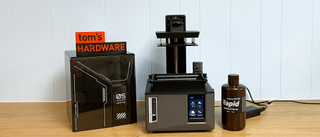
Best Ultra High Resolution 3D Printer
Specifications
Technology: Resin
Build Volume: 153 x 77 x 165 mm
LCD Resolution: 9K
LCD Size: 7-inch Monochrome
XY Resolution: 18 x 18 microns
Interface: 4-inch Touch Panel
Connectivity: USB, WiFi
Reasons to buy
+ Tilt release Excellent 9k resolution Auto Level Built-in Camera
Reasons to avoid
- Difficult to remove prints with default settings
Table-top gamers rejoice! The Elegoo’s Mars 5 Ultra makes 3D printing tiny orc armies and hordes of space marines a breeze. This resin printer has a Bag of Holding’s worth of automatic features: auto-leveling, tilt release, failure detection, and resin level detection. It also comes with a built-in camera to magically monitor your prints and a layer of tempered glass to protect the light source.
Its small size is perfect for printing miniatures, plus it’s fast and precise. Feed it high detail resin, and you’ll get prints with razor sharp details. The tilt release aids print speed and reduces failure rates as it gently peels each layer off the bottom film before dunking the model back into the resin.
The Elegoo Mars 5 Ultra launched with a $338 MSRP but is currently available for $269.99 at the Anycubic store.
More: Elegoo Mars 5 Ultra Review
Best Medium Format 3D Printer

Best Medium Format 3D Printer
Specifications
Technology: FDM
Build Volume: 320 x 320 x 385 mm
Build Platform: Flexible PEI
Interface: 4.3-inch Color Touchscreen
Bed Leveling: Semi-Automatic 121 Point
Connectivity: microSD, USB, Ethernet, Wi-Fi
Reasons to buy
+ 400W PSU for rapid nozzle and bed heating Integrated Wi-Fi Powerful part cooling fan module Silent stepper drivers 5.2:1 dual gear direct drive extruder Klipper firmware
Reasons to avoid
- Custom nozzle currently not available
The Elegoo Neptune 4 Plus strikes a well-calibrated balance between large format printers that offer huge build volumes and speed machines that are designed for lightning-fast prints. With a build volume of 320mm x 320mm x 385mm and a max print speed of 500mm/s (recommended: 250mm/s), the Neptune 4 Plus targets users on the fringe of both of these markets without compromise. The flexible bed makes part removal a one-handed operation, and the large part cooling fan module results in high-quality parts even at fast speeds.
The integrated Wi-Fi module on the Neptune 4 Plus is a welcome addition, as the printer can be easily monitored or adjusted remotely using the Fluidd Klipper interface. Add in a USB webcam plugged straight into the printer and you can easily remotely monitor a print with visual feedback all from a slicer like OrcaSlicer.
The Neptune 4 Plus offers both larger build volume as well as faster print speeds without a dramatic increase in cost. With a debut price of $350, the Neptune 4 Plus is an easy choice for anyone interested in adding a larger machine to their printer fleet, with the added bonus of faster print speed as well.
More: Elegoo Neptune 4 Plus 3D Printer Review
Best 3D Printer / Laser Engraver Combo
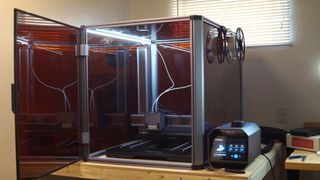
Best Combo 3D Printer / Laser Engraver
Specifications
Technology: FDM, Laser engraver, CNC
Build Volume: 400 x 400 x 400 mm
Build Platform: PEI coated glass, heated
Interface: Color Touch Screen
Bed Leveling: Automatic
Connectivity: USB stick, Wi-Fi
Reasons to buy
+ Huge build volume Great at printing, laser cutting and CNC machining Included enclosure
Reasons to avoid
- Very expensive Huge footprint Can't handle TPU Filament
We've seen a few 3D printers that double as laser engravers, but most of these products live up to the phrase "jack of all trades, master of none." The SnapMaker Artisan 3-in-1 does three different things really well: laser engraving, CNC carving and 3D printing. You'll pay a large premium of $2,899 for this product and you'll need a huge table to accommodate its 508 x 620 x 634 mm (20 x 24.4 x 24.9 inches) frame. However, if you want the features it provides, the Artisan 3-in-1 is a great choice.
When it operates as a 3D printer, the SnapMaker Artisan 3-in-1 delivers huge, detailed prints, thanks to a generous 400 x 400mm build volume. It also has a dual hot end, with two extruders that each can connect to a different spool of filament, allowing for dual color or dual-material prints. When we printed a black jar with red hearts on it, the output was sharp, and there was no bleeding or blurriness between the colors.
The Artisan had no problem printing a very tough RC car part in ABS, but flexible prints might be its Achilles heel. A TPU model of a bunny came out a little stringy.
The printer also has a number of premium 3D printing features, including built-in Wi-Fi, a build plate that's PEI glass on one side and plain glass on another, and automating bed leveling. Its dual extruders use direct drive.
The Artisan 3-in-1 comes with a large enclosure you can place it inside, which is good not only for working with difficult filaments but for protecting your eyes from damage when you are laser engraving with it. The laser can cut leather, wood, fabric or paper and engrave onto copper, aluminum, glass, stone and dark acrylic. We tested the laser and used it to create a model of a ruler and protractor that were burned into a 5mm sheet of plywood and found that the lines were clean and the marks and numbers on the ruler were sharp.
The CNC function works for carving wood, acrylic, soft stone, carbon fiber and even PCB. We used it to create a "Luban Lock," a 3D puzzle that the machine carved out of a piece of MDF (Medium Density Fiber) board. The model looked really good and only took 36 minutes to complete.
Read: SnapMaker Artisan 3-in-1 Review
Best 3D Printer for Kids
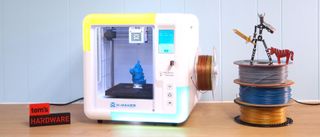
Best 3D Printer for Kids
Specifications
Technology: FDM
Build Volume: 150 x 150 x 150 mm
Build Platform: Soft PC Magnet, heated
Interface: 3.5 Inch Touch Screen
Bed Leveling: Factory Set (Semi Auto)
Connectivity: WiFi, USB
Reasons to buy
+ Simple to use Flexible build plate Excellent print quality Comes with kid friendly design apps
Reasons to avoid
- Clunky software
3D printers are not toys, but that doesn’t mean kids can’t have a printer of their own. The AO Seed X-Maker is the best 3D printer I’ve seen made specifically for a child to run independently. It’s compact, it’s cute and it comes with its own suite of kid-friendly design software.
Unlike some printers for kids, this one is not “dumbed down.” It’s a fully enclosed 3D printer that can still be used with normal slicers like Cura or PrusaSlicer – which means it can grow to meet the needs of an advanced student or grownup. It’s simple to load, comes factory leveled, and has an informative graphic interface.
The X-Maker is fully assembled, and its software is packed with toys ready to personalize and print. Some of the apps are a little clunky, and the onboard slicer is limited, but it gets the job done. The best part is there are no memberships to buy or toys to unlock with tokens, everything is included. You can gift this printer to a child in the morning and have toys in hand before bedtime.
The software also provides a “walled garden” for children, so they do not need to access the internet at large to use it. However, those limits are placed solely in the software. If you want to use the X-Maker as a normal 3D printer, you can transfer files a via USB stick.
More: Anycubic Photon Mono 2 Review
How We Test 3D Printers
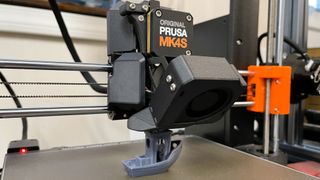
We thoroughly review and test every 3D printer that enters our workshop using the following methodologies:
- After unboxing each 3D printer, we run several test prints, such as the 3D Benchy, a well-known calibration print.
- We slice prints with the provided software to test the new user experience, then see if the printer is supported by well-known 3D party slicers like Cura, PrusaSlicer, and OrcaSlicer.
- We test the printer’s Wi-Fi capabilities and, if there is an app, see how easy it is to use to send files and monitor prints.
- The printer is also tested using typical models popular with our readers, from practical prints to toys.
- Multiple filaments are run, including PLA, PETG, and TPU.
- Enclosed printers are tested with high-temperature materials such as ASA and nylon.
Finding the Best 3D Printer for you
There are several factors to consider before buying the best 3D printer for you, so be sure to consider the questions before making a choice.
- Resin MSLA or Filament FDM? The two most popular styles of desktop 3D printing, resin MSLA and filament FDM 3D printers offer various strengths and weaknesses, and choosing the style more suited for your application will help you get better results. For many , especially beginners, filament 3D printers are a better choice because they are easier to use and work with a wide variety of materials. They are also far safer for anyone with children or pets around.
Resin 3D printers can provide a bit more detail, so they are popular among folks printing out game pieces. However, you need to handle toxic chemicals and wear a mask when setting up a print and, after the printing is over, you must wash and cure your prints. We have some resin printers on this list but also maintain a more detailed article where we name all of the best resin 3D printers.
- How much build volume do you need? If you want to print out large parts in a single print, you’ll need a printer with ample build volume. This is usually directly tied to the price of the machine, so a larger printer is going to cost more money. Printers with a 100mm cubed or less build volume are on the smaller side, 150 to 220mm cubed are average, and 250mm inch cubed and above are considered large format.
- Manual or automatic bed leveling? Leveling the bed of a 3D printer is an important but very annoying part of the process. Many printers have auto-leveling capability, which saves you most of the work and, considering that you can now find printers with this feature for less than $250, you should consider it a must-have.
- What materials are you printing with? If you're buying an FDM printer, you'll want to use one of the best filaments for 3D printing so you can get good models. However, some substances require higher temperatures that not every printer can achieve. PLA filament, the most common type, can print on anything but more durable or flexible plastics such as PETG or TPU need extruders that can hit 220 to 230 degrees Celsius while ABS and Nylon require 240 or 250-degree heat. Also, note that if you want to print in TPU (a flexible material), you should get an FDM printer with a direct drive system that pushes the filament more directly through the extruder. Resin printers have fewer material choices.
MORE: Best Resin 3D Printers
MORE: Best Budget 3D Printers

 1 week ago
7
1 week ago
7
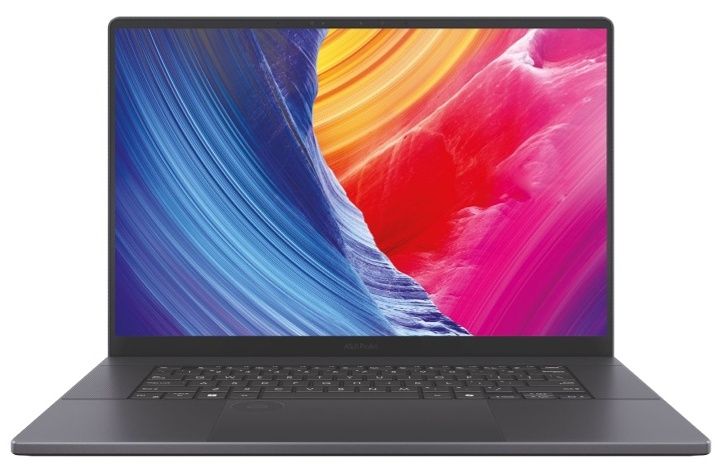
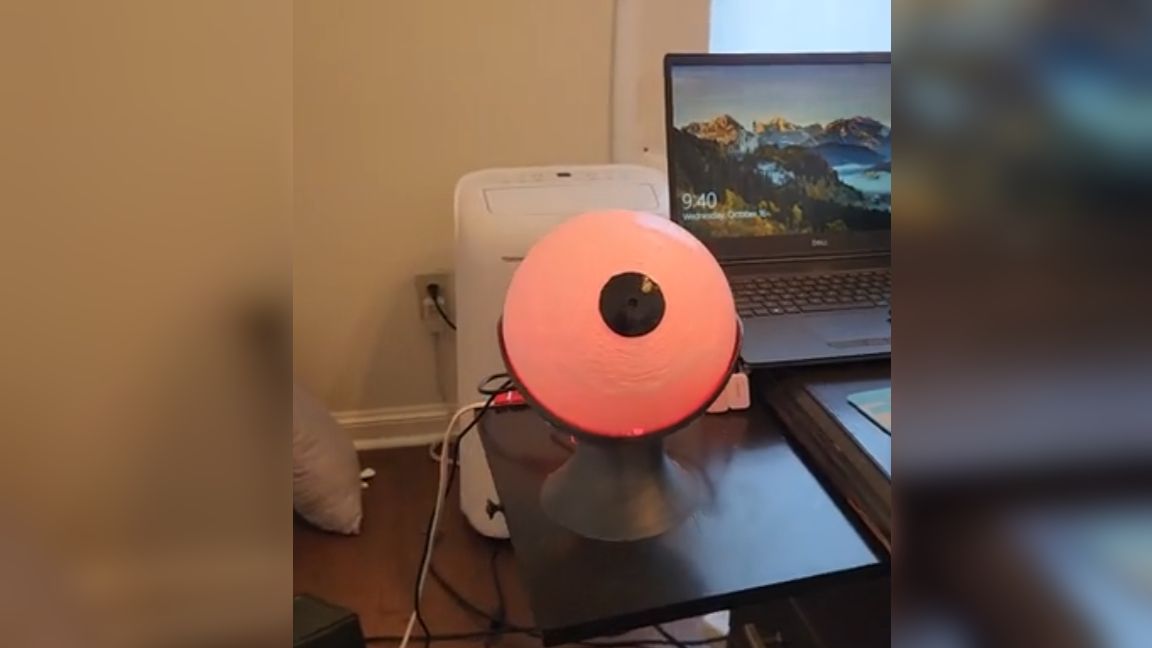
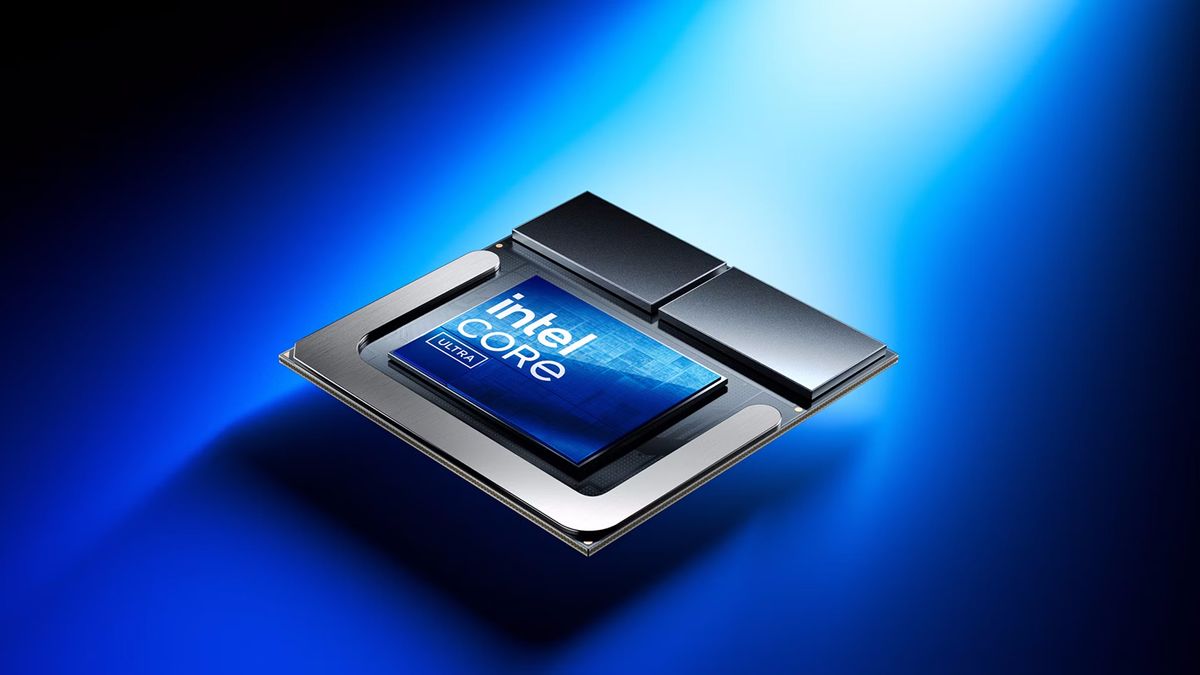


:quality(85):upscale()/2024/10/17/848/n/1922729/9dece426671163b35dcb11.60305022_.jpg)


 English (US) ·
English (US) ·